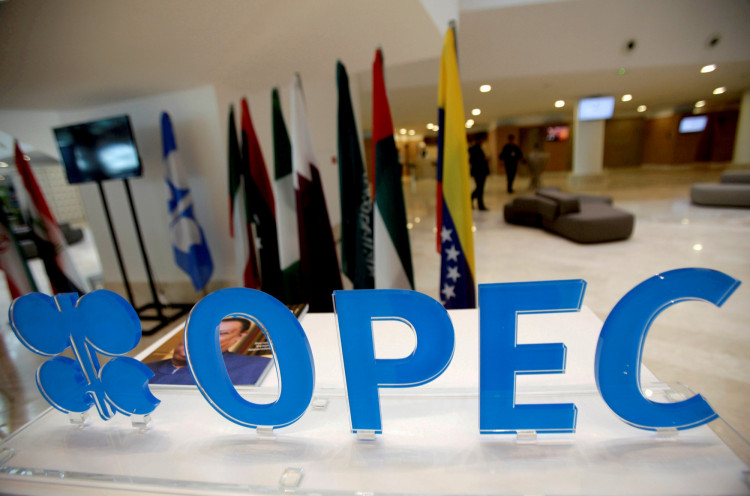The Organization of the Petroleum Exporting Countries (OPEC) has revised its global oil demand forecast for 2023 upwards, maintaining its 2024 projections. In its November report released on November 13, OPEC increased the global oil demand growth rate for 2023 from 2.44 million barrels per day, as estimated last month, to 2.5 million barrels per day. The growth rate for 2024 remains unchanged at 2.25 million barrels per day.
OPEC attributes this year's global demand growth primarily to economic recovery in China and other non-OECD regions, with steady increases in transportation and industrial fuel demands boosting oil requirements. The organization expects these countries to see a nearly 2.4 million barrels per day increase in total oil demand in 2023, while OECD countries are projected to experience a rise of 82,000 barrels per day.
The report emphasizes that the global oil market fundamentals remain strong, suggesting that negative sentiments around demand have been overstated. Recent data confirms robust major global growth trends and healthy oil market fundamentals.
In terms of global economic growth, the U.S. economy continues to experience strong growth in the third quarter of 2023, and the International Monetary Fund recently raised its 2023 economic growth forecast for China to 5.4%.
Particularly in China, OPEC notes that the country's oil demand has been underestimated. Recent data shows that China's crude oil imports increased to 11.4 million barrels per day in October, maintaining a trajectory towards a new annual high for the year, roughly at the same level. In fact, China's crude oil imports have remained very healthy, significantly above the five-year average, with a month-on-month increase of about 240,000 barrels per day and a year-on-year increase of 1.2 million barrels per day.
For 2024, global economic growth, coupled with continued improvements in China's economy, is expected to support oil consumption. OPEC forecasts global oil demand to reach 104.3 million barrels per day.
Regarding inventories, OPEC notes that global crude oil stocks declined in the third quarter of this year, reflecting high global crude oil throughput and voluntary adjustments by oil-producing countries. The organization emphasizes that global oil inventories remain below the average levels seen from 2017 to 2022. Recent observations of increased global inventories are attributed to typical seasonal trends, particularly maintenance at heavy refineries.
On the supply side, OPEC has revised its 2023 non-OPEC supply forecast upwards by 100,000 barrels per day to 1.8 million barrels per day, while maintaining its 2024 forecast at 1.4 million barrels per day. The United States is a major contributor to this growth. Since January, weekly data has consistently underestimated U.S. crude oil production, with significant upward trends in monthly data, especially since August. More reliable monthly data indicates a gradual increase in U.S. crude oil production.
OPEC itself continues to increase supply, with October production rising to 27.9 million barrels per day. This is an increase of 80,000 barrels per day compared to September's daily production, which was revised from 27.75 million barrels to 27.82 million barrels.
The organization also notes that the market may have experienced a shortfall of 1 million barrels per day in the third quarter of 2023. It anticipates needing to supply 29.08 million barrels per day to balance the market, while non-OPEC oil-producing countries are expected to produce 73.03 million barrels per day this year.
Saudi Arabia and Russia have supported prices this year through production cuts. OPEC leader Saudi Arabia has reiterated its intention to cut production by 1 million barrels per day until the end of the year. Russia has also stated it will continue to cut production by 300,000 barrels per day until the end of December.
OPEC+ is scheduled to meet on November 26 to discuss future production levels.
Following the outbreak of the Israel-Palestine conflict, oil prices surged due to concerns that the conflict would affect the broader Middle East region. Brent crude reached a peak of $92.38 per barrel on October 19. Prices have since fallen, currently trading at $81.64 per barrel.
OPEC comments on the recent decline in oil prices, attributing it mainly to speculation by financial market traders, echoing the views of Saudi Energy Minister Prince Abdulaziz bin Salman. Despite healthy market fundamentals and supportive conditions, oil prices have trended downwards in recent weeks, primarily driven by financial market speculators who significantly reduced their net long positions in October compared to the end of September.
OPEC indicates that if October's production levels continue through December, the fourth quarter could see a deficit of 3 million barrels per day.






